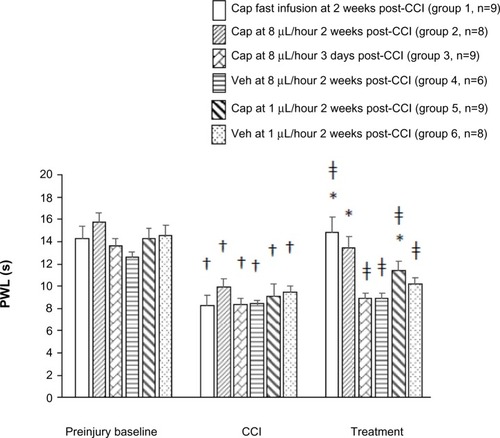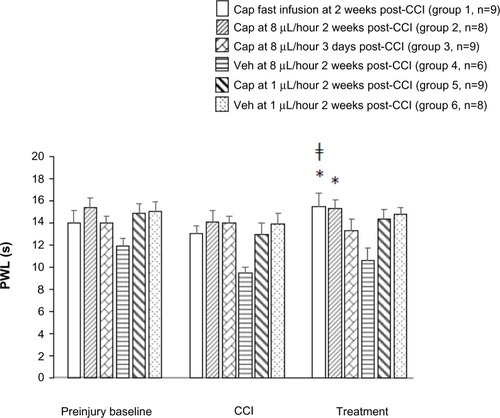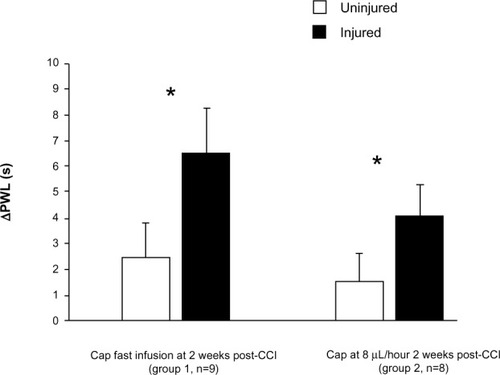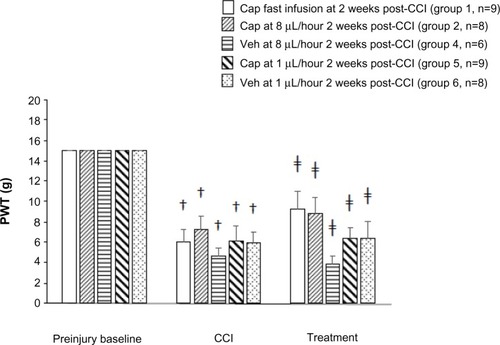Figures & data
Table 1 Summary of experimental protocol
Figure 1 Intrathecal capsaicin increased PWL to noxious thermal stimulation in paw ipsilateral to nerve injury.
Abbreviations: cap, capsaicin; veh, vehicle; PWL, paw withdrawal latency; CCI, chronic constriction injury.

Figure 2 Intrathecal capsaicin increased PWL to noxious thermal stimulation in paw contralateral to nerve injury.
Abbreviations: cap, capsaicin; veh, vehicle; PWL, paw withdrawal latency; CCI, chronic constriction injury.

Figure 3 Intrathecal capsaicin produced a more profound increase in the thermal response threshold in the injured side as compared to the uninjured side.
Abbreviations: cap, capsaicin; veh, vehicle; PWL, paw withdrawal latency; CCI, chronic constriction injury.

Table 2 Pairwise comparisons of averaged PWLs to thermal stimulation in the paw ipsilateral to CCI at three different time points – preinjury baseline, CCI, and treatment
Figure 4 Intrathecal capsaicin did not alter PWT to mechanical stimulation in the injured side.
Abbreviations: PWT, paw withdrawal threshold; cap, capsaicin; veh, vehicle; CCI, chronic constriction injury.

